The Cape Barren Goose is one of the world’s rarest geese having clawed its way back from the brink of extinction during the 1950s. They live on off shore islands in southern Australia where they are still rated as vulnerable. They are striking birds growing up to 1 metre with wingspans of almost 2 metres.
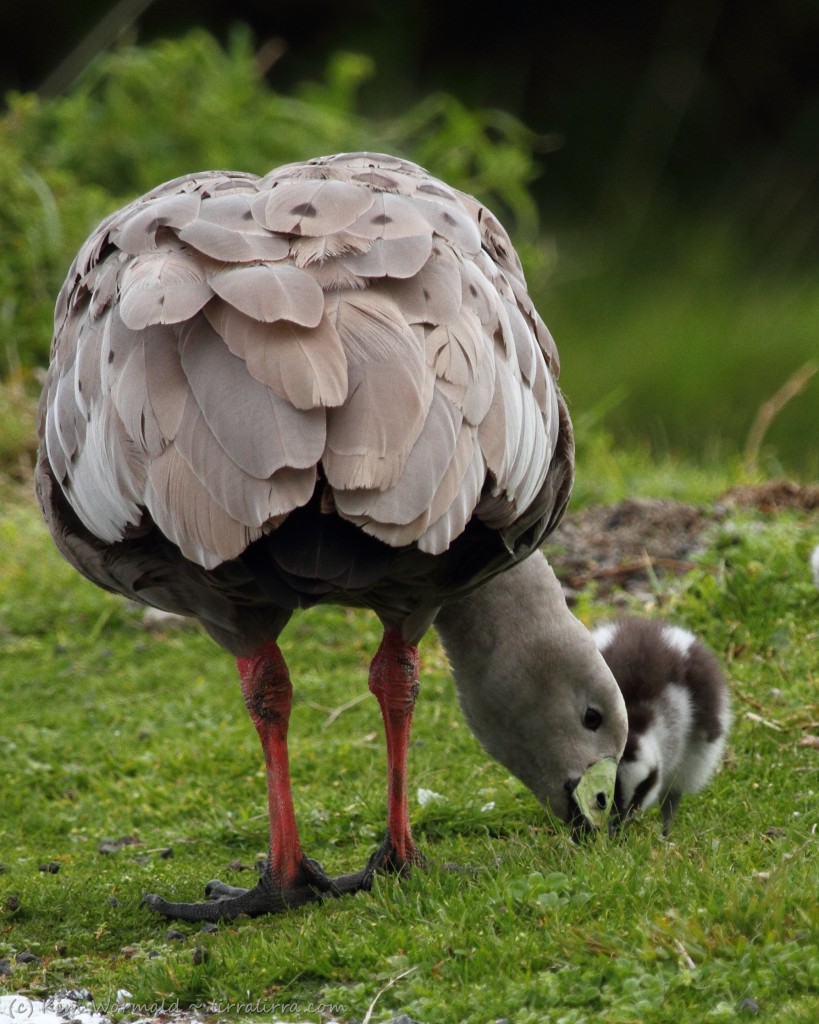
Cape Barren Goose (Cereopsis novaehollandiae)
Canon 7D, 100-400mm L IS USM, Av priority, handheld, natural light
It’s hard to believe that this little fluff-ball, no bigger than its parent’s head, has the potential to grow into a massive goose.
This gosling’s foot reminds me of a puppy with huge paws. Cape Barren Geese are grazers and this little fellow looks as though it has its eye on a tasty blade of grass. Sometimes when they are grazing they look more like goats than geese to me. As the goslings grow their legs turn to the pink/deep red colour of the adult birds’ legs, their feet remain black. Their ceres become bright greenish-yellow quite quickly and once their feathers sprout they will be predominantly grey with large black spots on their wings and shoulders.
I can’t help but smile at the sight of this juvenile with food dangling from his bill and bits of grass on his cere.
These juveniles were enjoying a swim in a puddle after having splashed around in it for the best part of an hour. The Cape Barren Goose swims only rarely, preferring to graze in paddocks, areas of tussock grass and heath-lands. I must be in a sentimental mood because I can see a heart shape formed by the necks and heads of these siblings.
Cape Barren Goose
Canon 7D, 100-400mm L IS USM, Av priority, handheld, natural light
This beautiful image is a sad one to end with but maybe including it will remind us all to help spread the word about driving with wildlife in mind. Glenn and I were on Phillip Island when a goose crossed the road in front of an oncoming car. Despite having ample time to safely stop the driver ploughed into the bird and drove on. The expression on the driver’s face was one of astonishment, as though she couldn’t believe what she was seeing let alone think to press the brake. We stopped, as did two young women who were distraught. Glenn gently lifted the dead goose to the side of the road while I watched the goose’s partner as it surveyed the scene: I can’t help seeing sadness in its expression. These birds mate for life. They choose nesting sites together, defend them vigorously, the female incubates the eggs and both partners share brooding duties. This goose was looking at a scene that changed its life all because one driver wasn’t keeping an eye out for wildlife.
Happy birding and safe driving, Kim
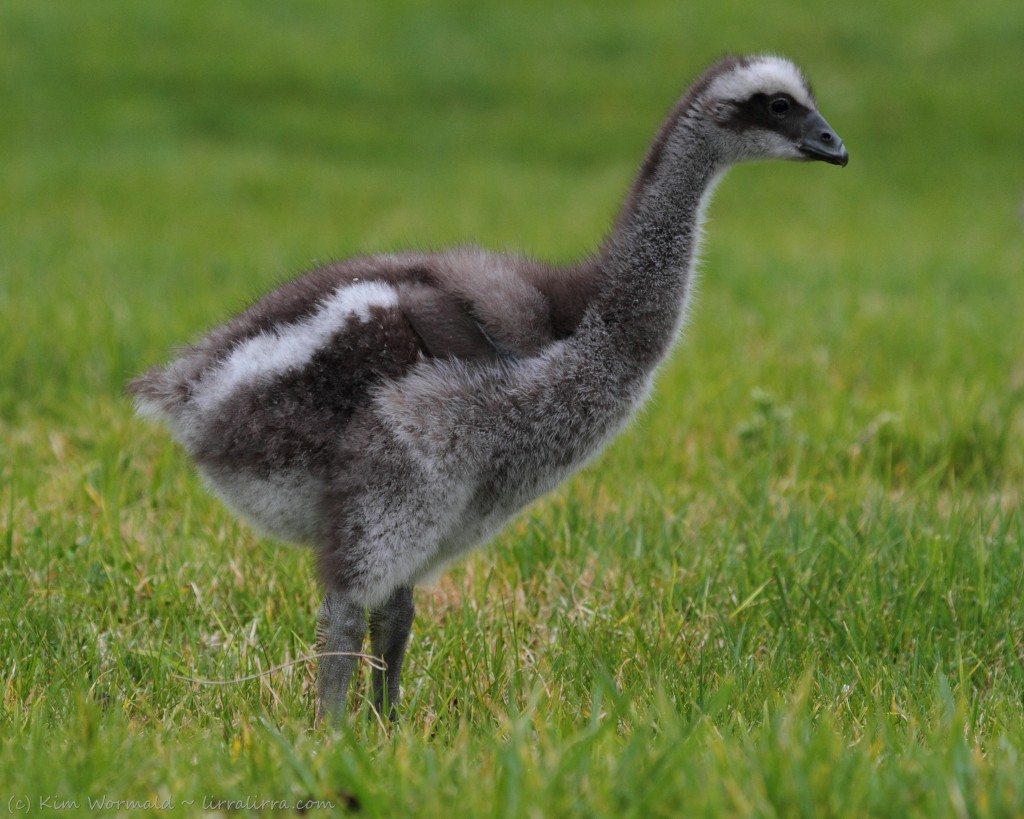
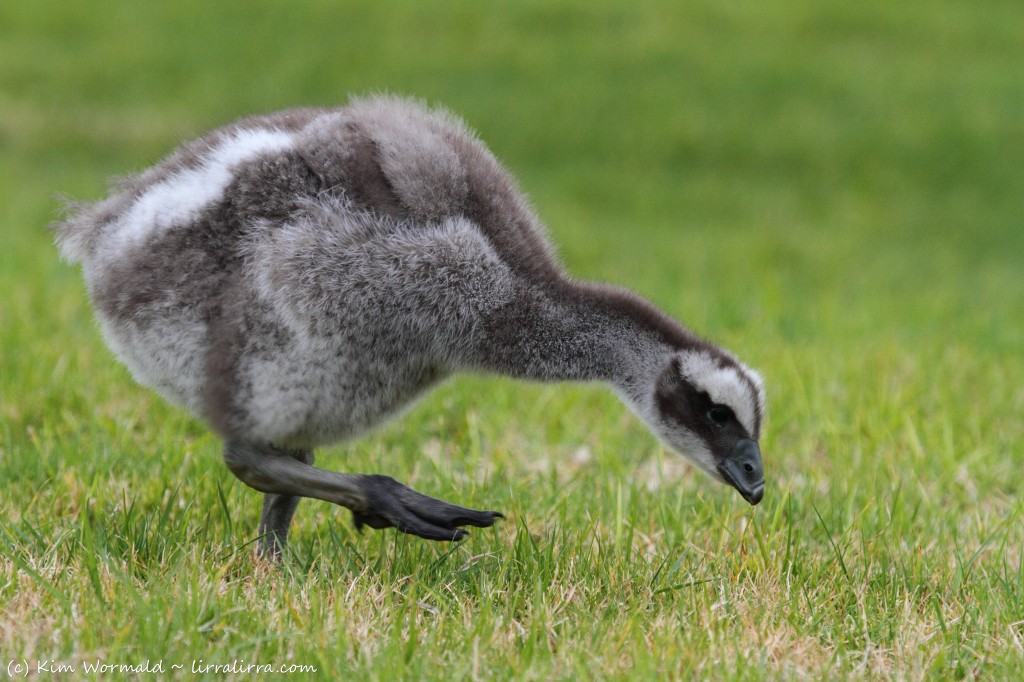
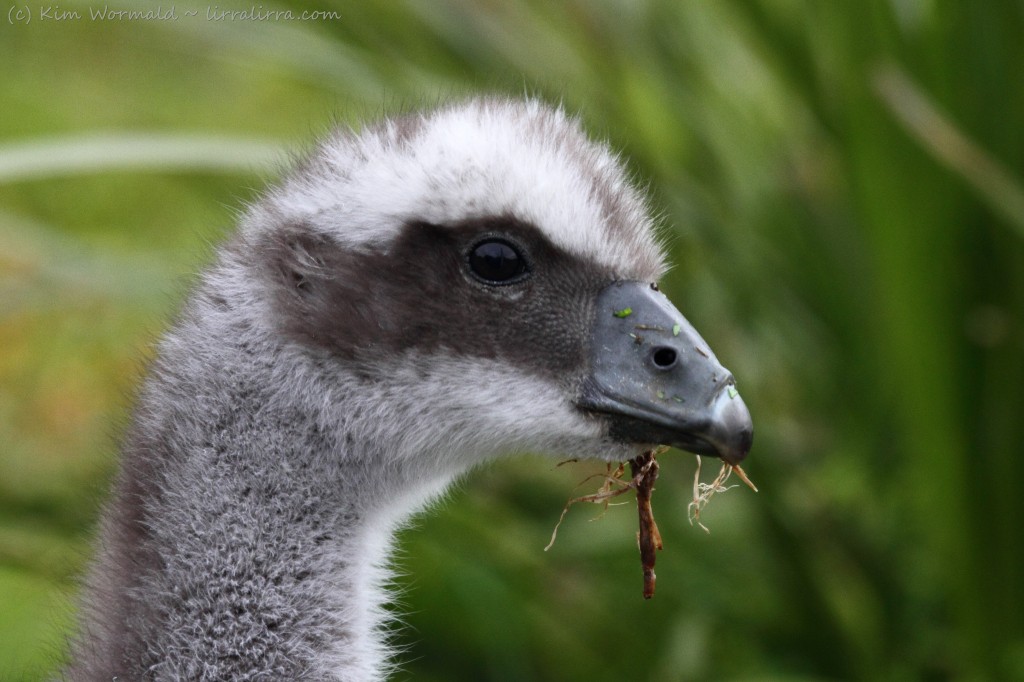
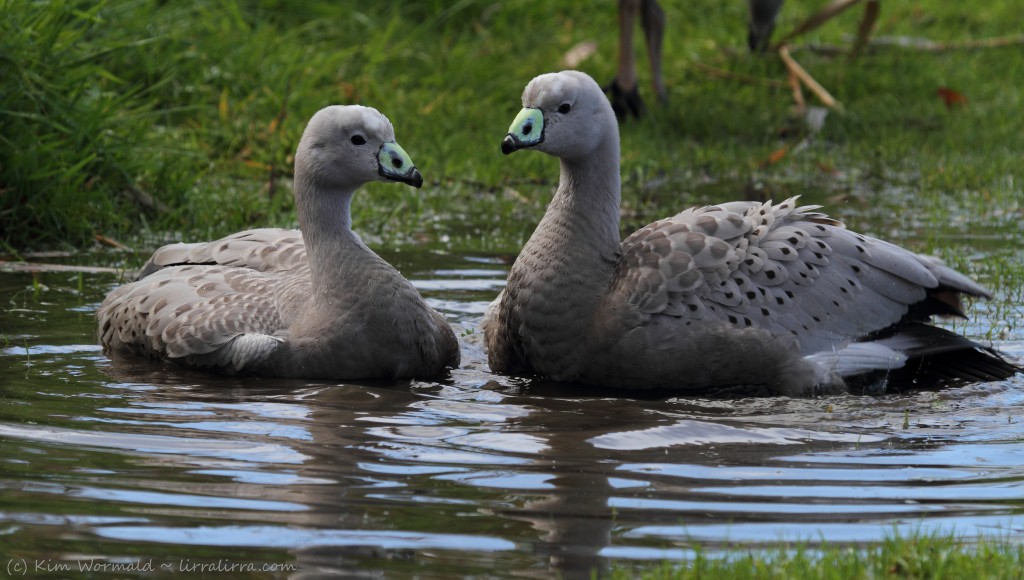
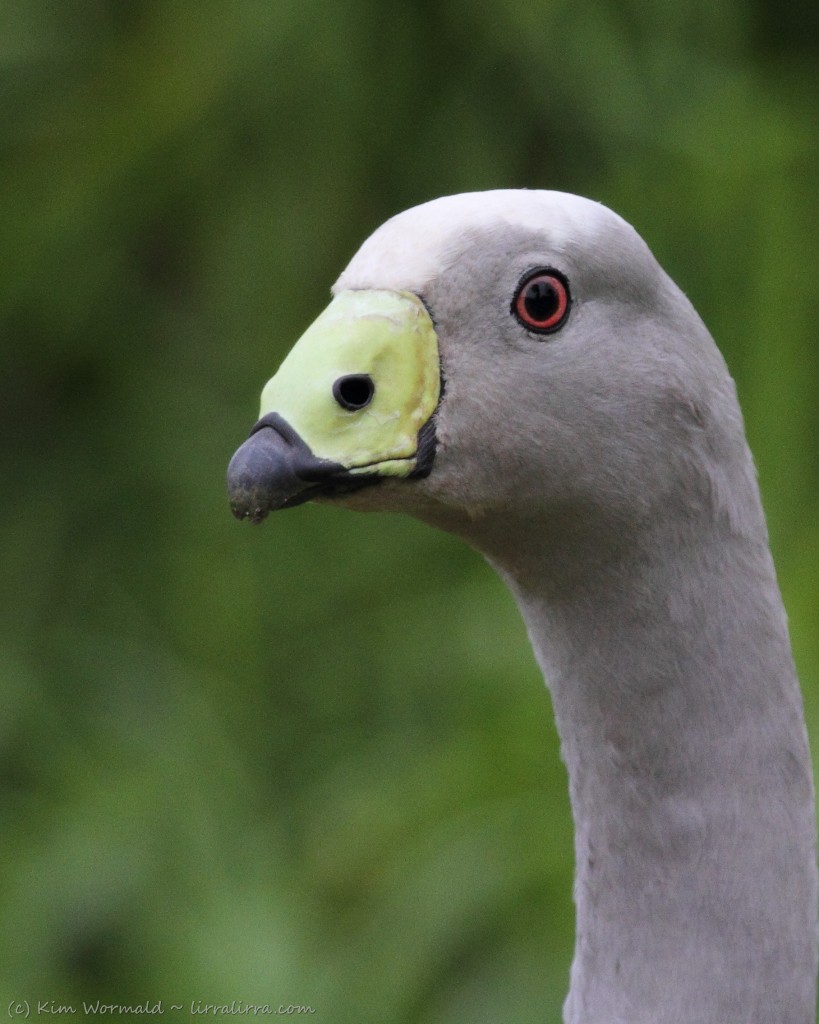

How could you ever curse these beautiful creatures. We have them grazing around our wetlands on a Phillip Island but sometimes they graze near the busy road. About 18 months ago 4 of these beautiful birds were mown down by a car near the cemetary. It appeared deliberate because of the wheel marks and where the poor birds ended up.
I totally agree with you Jude. I feel sick at the thought of someone deliberately hurting them and am glad you value them around your wetlands.
Oh that last one is really sad!! Do Cape Barrens migrate? Is there a reason for the babies being stripy? I’d guess its for camoflage??
The non-breeding geese sometimes go over to the mainland during summer but they don’t migrate. It was a really sad thing to see, so unnecessary. I’m sure you’re right about the stripes, like emu chicks.
Hi Kim
It was lovely to meet and chat at the reserve in Montrose last week. I was really keen to see your work, and here it is … so much to look at and so much to enjoy!
You offer such beautiful gifts… our bird books are filled with older pictures, many hand drawn that are divine in their own right, but it’s gorgeous to see such a mass of imagery… you do seem to have found your niche. We look forward to checking in on your work and looking out for you on redbubble.
love Jane and David
http://www.creatologist.net
Hi Jane and David, I’m really pleased you enjoyed my bird photos. I love spending time with nature and learning about bird photography has been a dream for many years. This week’s post will be about Fairy Martins, gorgeous little birds. I’m looking forward to seeing your images, hope we meet up again before the next Heathfield Creek anniversary!
Kim, I see the heart shape too and love it! These are beautiful geese, the gosling pictures sure are darling and I love the intimate family shot of the first image!
I’m glad I’m not the only one to see the heart shape